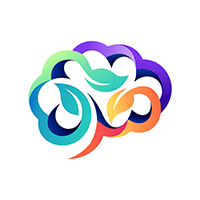Matching Teaching to the Needs of Gifted and Talented Learners
Developing an Effective Learning Environment
Gifted and talented students, like all learners, benefit from an environment that offers ample opportunities to apply their skills, deepen their understanding, and advance their knowledge. Such a learning environment should:
- Value Learner Interests: Recognize and prioritize learners’ interests and learning styles.
- Promote Independence: Foster a culture of autonomy and encourage learners to take initiatives.
- Openness to Ideas: Encourage students to be receptive to others’ ideas and approaches.
- Cross-Subject Connections: Create links between different subjects or parts of the learning program.
- Real-World Applications: Relate learning to real-world applications.
- Resource Variety: Utilize a mix of resources, ideas, methods, and tasks.
- Diverse Settings: Encourage students to learn in various contexts – individually, in pairs, groups, cross-year, and even across institutions.
- Self-reflection: Engage students in reflecting on their learning process to understand what helps them progress.
Checklist for Teachers on the Learning Environment:
Talking about Learning:
- Foster a culture where wrong answers become learning opportunities and creativity is celebrated.
- Model discussions that focus on the learning process, not just the outcomes.
- Equip students with the language and skills needed for self-reflection.
- Seek feedback from gifted and talented students about their learning preferences.
- Enhance awareness of students’ learning styles.
- Offer opportunities to explore less preferred learning styles.
- Promote an achievement-oriented classroom ethos.
Questions and Challenge:
- Encourage open-ended questions that don’t have fixed answers.
- Engage learners in the nature and depth of questions.
- Facilitate an environment where students ask questions freely.
- Integrate self and peer assessment techniques.
- Display examples of exceptional student work to set high expectations.
- Engage learners in recognizing and responding to challenges.
Planning and Resources:
- Ensure learning activities align with higher-level expectations and cater to gifted and talented needs.
- Collaborate with teaching assistants, supply teachers, and other educators to identify and cater to gifted students.
- Strengthen connections with school library services and other resource providers.
- Develop a robust collection of resources, including online resources. Ensure these resources are actively used in teaching and learning.
In essence, a teacher’s role in catering to gifted and talented students goes beyond just advanced curriculum. It involves creating a conducive learning environment, promoting a culture of inquiry and challenge, and ensuring resourceful planning.
